Mental math can be a lot of fun—once you know a couple of tricks! Think of mental math as playing with numbers: You can break them apart, combine them, round them up or down, hold them in your mind, or eliminate them quickly. Numbers are predictable, and that realization can help you feel comfortable working with them.
Here are two simple ways to do mental math quickly and easily!
Tip #1: Break numbers apart
When adding two- or three-digit numbers, break them into easier numbers before you add them up. Splitting numbers into hundreds, tens, and ones makes it easier to put them back together!
For example, if you are adding 23 + 45, break the numbers apart like this:
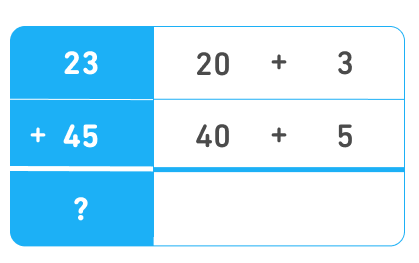
Then it is easy to add the tens first:
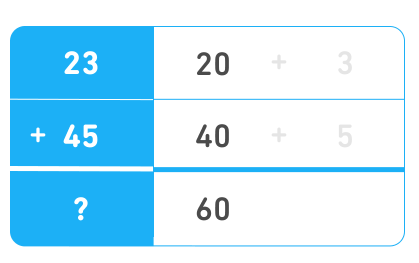
Hold the 60 in your head, and now add the ones:

And then just add both totals:
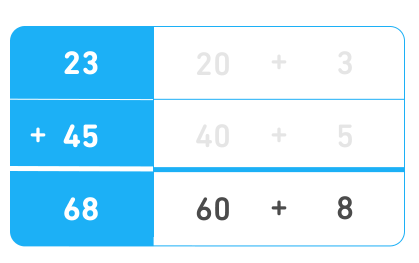
The calculations above use numbers ending in 0 and small numbers—which are easier to work with. But the process is the same for larger numbers!
This time, let's try 424 + 155.
First, break them apart:
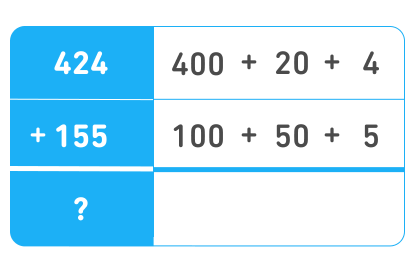
It is so much easier to work with those numbers! Now add them together:
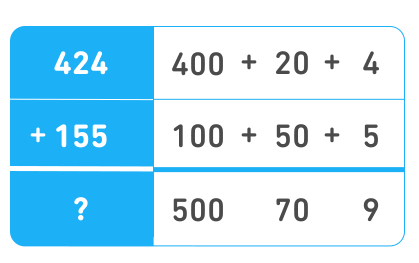
Finally, that last bit of addition:
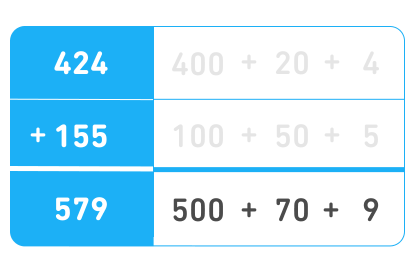
Tip #2: Make tens and hundreds your friends
When you have numbers that are close to a ten (like 30, 40, 50, etc) or a hundred (like 200, 300, 400, etc), they are easier to work with if you help them get to that nearby round number.
Let’s say you are adding 323 +198. The second number is very close to 200—it just needs 2 more! So borrow that 2 from the first number to make one of them a friendly round number:
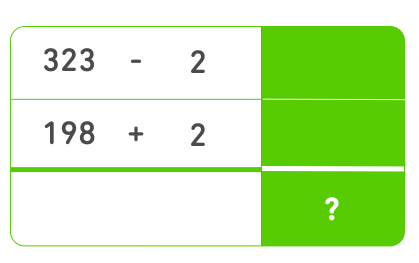
And then it becomes a breeze to add 321 + 200 = 521.
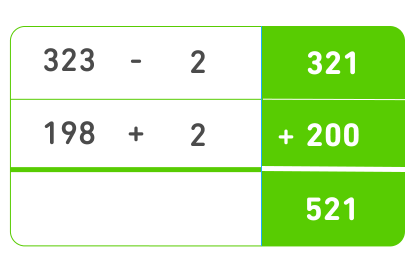
*Count* on these tips for faster mental math
Like any skill, mental math takes practice, but look for patterns and tricks to help you improve! Even these simple calculations can be a fun and practical way to keep your mind sharp.



